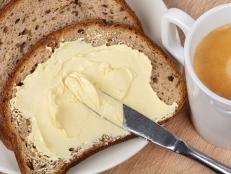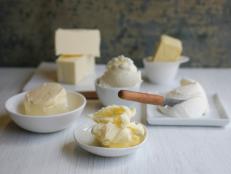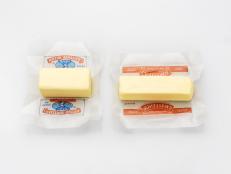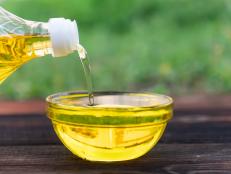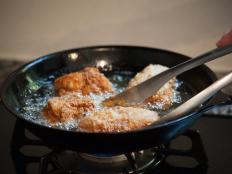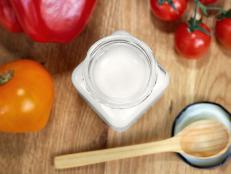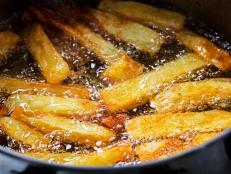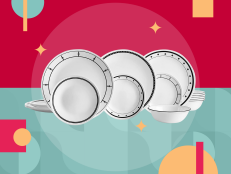How to Make Ghee
It's an easy, flavorful way to instantly upgrade your cooking.

Liudmila Chernetska/Getty Images
By Grace Elkus for Food Network Kitchen
Grace is a contributing writer at Food Network.
With a batch of homemade ghee in your kitchen, you’re one step closer to flaky samosas, the crispiest chicken cutlets, heavenly naan and so much more. Use this clarified butter anywhere you would vegetable oil or coconut oil. It will bring a caramellike flavor and aroma into anything you’re cooking, baking or frying. Here’s everything you need to know about how to make ghee at home.

Евгения Матвеец/Getty Images
What Is Ghee?
Ghee is a type of clarified butter that’s cooked until the milk solids brown, giving it a toasty flavor and pretty golden hue. It’s a staple in Indian pantries, beloved for its high smoke point — making it great for frying and sautéing — and its nutty, earthy flavor. Because clarifying removes the milk solids, it also has a prolonged shelf life.
Is Ghee Dairy Free?
Ghee contains the protein found in butter that causes dairy allergies, meaning it’s not dairy-free. However, it contains a minimal amount of lactose, making it a viable option for people who are lactose-intolerant.

IndiaPix/IndiaPicture/Getty Images
Ghee vs Butter vs Clarified Butter
Ghee is a type of clarified butter — or butter with the milk solids and water removed — that’s cooked for a prolonged time, causing the milk solids to brown. This adds a toasty, nutty flavor and deep golden color to the butter fat. Whereas butter’s natural smoke point is around 350 degrees F, clarified butter and ghee’s smoke point is 450 degrees F, meaning it's much less likely to burn.

Westend61/Getty Images
How to Make Ghee
Though most supermarkets (including Trader Joe’s) sell jars of ghee, it’s easy to make at home and lasts for a long time. For the best results, start with unsalted, grass-fed butter.
Step 1: Melt the Butter
Heat butter in a heavy skillet or saucepan over medium heat until melted.
Step 2: Bring the Butter to a Boil
Keep cooking the butter, stirring occasionally, until it boils with large bubbles and white milk solids form on the surface. Eventually, only fine white foam will remain.
Step 3: Brown the Butter
Soon, the overall color of the butter will change from yellow to golden. When the sediment beneath the foam turns light brown and the ghee takes on a nutty aroma, remove the butter from the heat.
Step 4: Strain the Ghee
Line a sieve or colander with cheesecloth and set it over a heatproof, airtight container. Pour the ghee through the cheesecloth and let cool before sealing with the lid. Rewarm before serving, if desired.

Krit of Studio OMG/Getty Images
How to Store Ghee
Store ghee in an airtight container at room temperature for up to one month. Alternatively, refrigerate for up to six months or freeze for up to one year.
Recipes to Make with Ghee
If it’s not already obvious, ghee is incredibly versatile. Use it for deep frying or searing proteins, sautéing aromatics or toasting rice. It’s also good drizzled over bread or snack mixes, or for making the keto-friendly bulletproof coffee. Here are a few recipes to get you started:

Teri Lyn Fisher
Gajar Ka Halwa
Ghee is used not once, not twice but three times in this Punjabi dessert: first to toast the nuts, then to soften the grated carrots and lastly to caramelize the halwa.

Matt
Chakkarai Pongal
Mixing ghee into this warm, comforting dessert gives it a velvety texture and rich flavor. Don't skip the garnish, which you'll make by toasting cashews and plumping raisins in a tablespoon of ghee.

Armando Rafael
Malpua
Frying these pancakes in ghee gives them toasty, buttery flavor without the risk of the butter burning. Add more in between batches to ensure each pancake is cooked to crisp, golden brown perfection.

Caitlin Ochs
The Best Chicken Tikka Masala
Cooking the sauce's aromatics in ghee provides built-in flavor from the get go. Use any remaining ghee to brush onto the naan for dipping.
Related Links:
40 Delicious Indian Recipes
Our Favorite Fried Chicken Recipes
Keto Recipes for Every Meal























